Radio signal reception range indication
This watch receives standard radio signals from Japan (2 stations), China, U.S.A. and Germany.
When you set the watch to a time zone in Japan, China, U.S.A. or Germany, the official standard frequencies the watch receives will be automatically changed accordingly to the selected time zone.
How to select the time zone (How to display the local time around the world)
How to set the time difference (How to display the local time around the world)
Each indication may differ depending on the model (design) of the watch.
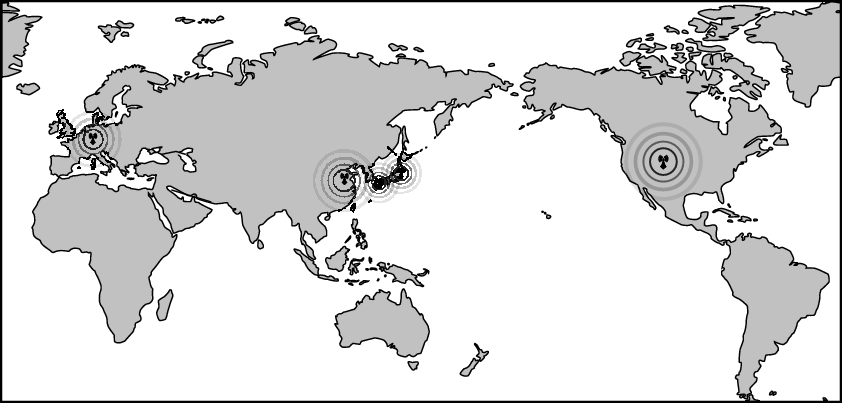
Germany (DCF77)
Germany (DCF77)
China (BPC)
China (BPC)
Japan (JJY)
Japan (JJY)
U.S.A. (WWVB)
U.S.A. (WWVB)
Radio signal reception range: Japan (JJY)
The reception range from the transmitting station is approximately 1,000 km (1,000 km radius of the transmitting station).
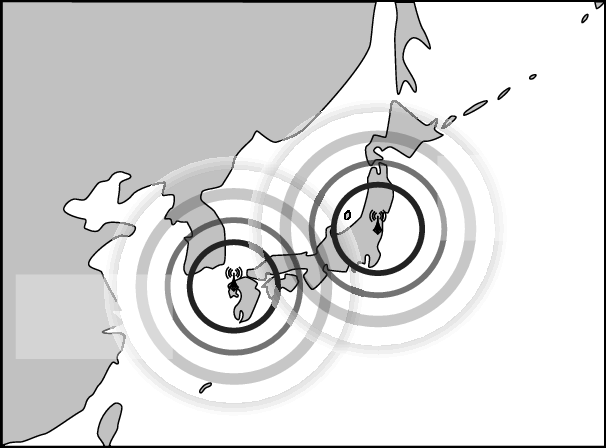
Hagane-yama transmitting station (60 kHz)
Ohtakadoya-yama transmitting station (40 kHz)
1,000 km
1,000 km
JJY is operated by the National Institute of Information and Communications Technology (NICT).
JJY is transmitted from two stations in Japan. Each station transmits JJY in a different frequency.
Fukushima:
Ohtakadoya-yama transmitting station
Frequency: 40 KHz
Kyushu:
Hagane-yama transmitting station
Frequency: 60 KHz
NICT: National Institute of Information and Communications Technology
Even within the reception range, weather conditions, terrain, buildings, and orientation may mean that reception is not possible.
Environments in which it is difficult to receive a radio signal
Radio signal reception range: China (BPC)
The reception range from the transmitting station is approximately 1,500 km (1,500 km radius of the transmitting station).
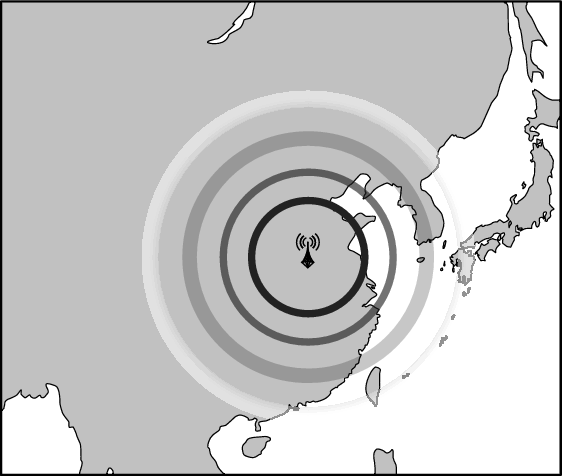
Shangqiu National Time Service Center (68.5 kHz)
1,500 km
BPC is operated by NTSC.
Shangqiu National Time Service Center
Frequency: 68.5 kHz
NTSC: National Time Service Center
The watch may be able to receive radio signals outside a reception range if the receiving conditions are favorable.
Even within the reception range, weather conditions, terrain, buildings, and orientation may mean that reception is not possible.
Environments in which it is difficult to receive a radio signal
Radio signal reception range: U.S.A. (WWVB)
The reception range from the transmitting station is approximately 1,500 km (1,500 km radius of the transmitting station).
There are four time zones within the reception range.
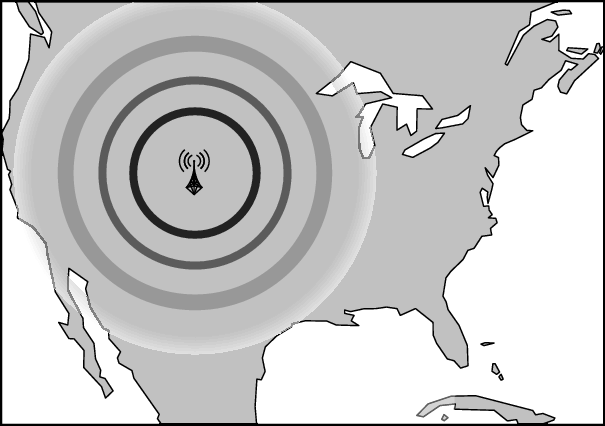
Fort Collins transmitting station Frequency (60 KHz)
1,500 km
WWVB is operated by NIST.
Fort Collins transmitting station
Frequency: 60 kHz
NIST: National Institute of Standards and Technology
The watch may be able to receive radio signals outside a reception range if the receiving conditions are favorable.
Even within the reception range, weather conditions, terrain, buildings, and orientation may mean that reception is not possible.
Environments in which it is difficult to receive a radio signal
Use of automatic reception is recommended, as this time frame is optimal for automatic reception.
Radio signal reception range: Germany (DCF77)
The reception range from the transmitting station is approximately 1,000km (1,000 km radius of the transmitting station).
There are three time zones within the reception range.
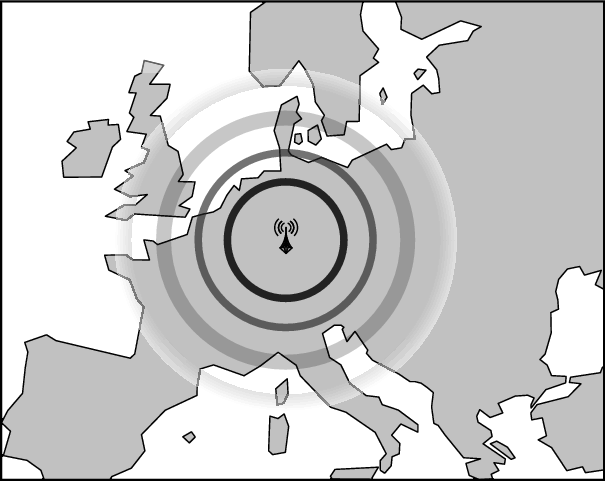
Mainflingen transmitting station (77.5 kHz)
1,000 km
DCF77 is operated by PTB.
Southeastern Frankfurt
Mainflingen transmitting station (77.5 kHz)
PTB: Physikalisch-Technische Bundesanstalt
Even within the reception range, weather conditions, terrain, buildings, and orientation may mean that reception is not possible.
Environments in which it is difficult to receive a radio signal
Use of automatic reception is recommended, as this time frame is optimal for automatic reception.
To improve radio signal reception
Place the watch in a place where it can easily receive a radio signal such as near a window.
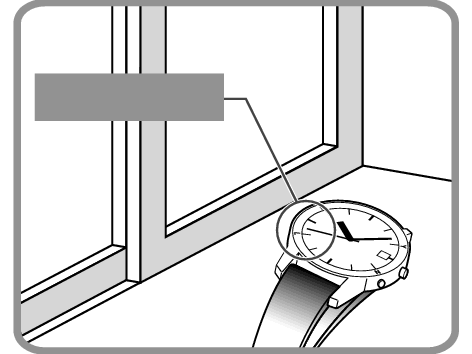
Antenna
The antenna is embedded at the 8 o’clock position of the watch.
Turning the antenna toward the outside of a window or the direction facing transmitting stations helps improve radio signal reception.
Locations of transmitting stations
Radio signal reception range indication
Do not move the watch while it is receiving radio signals.
To enhance the reception of radio signals, do not move the watch or do not change the orientation of the watch while it is receiving radio signals.
If the button or crown is operated while the watch is receiving a radio signal, the reception will be cancelled.
The place where the watch is put before going to bed
Place the watch next to a window facing in the direction of a transmitting station before bedtime because automatic reception is performed late at night.
The standard radio signal is influenced by the distance from the transmitting station, as well as by terrain (including buildings) and weather conditions.
Also, please search for a place to easily receive radio signals when attempting reception.
Environments in which it is difficult to receive a radio signal
Avoid putting the watch in such places when it receives radio signals.
 |
 |
 |
|
Close to home electrical appliances such as TV’s, refrigerators or air conditioners Close to OA equipment such as mobile phones, personal computers or fax machines Close to steel desks or other furniture made of metal |
In places generating radio interference, such as construction sites or places with heavy traffic |
Close to overhead power lines, TV stations, train cables |
 |
 |
|
|
Inside a building, between tall buildings, underground |
Inside a vehicle, train, or airplane |
CAUTION
The watch may display the wrong time if it fails to receive radio signals properly because of interference.
The watch may also fail to receive radio signals properly depending on the location or radio wave receiving conditions.
In this case, move the watch to another place where it can receive radio signals.
When the watch is out of reception range, its accurate quartz movement (loss / gain: ±15 seconds per month on average) will continue to keep the time.
The time signal transmission may be stopped during maintenance of the facilities of the (each) transmitting station or because of a lightning strike.
In such a case, see the (each) station’s website for further information or contact SEIKO CUSTOMER SERVICE CENTER.
Websites of transmission stations (As of August 2020)
Japan:
National Institute of Information and Communications Technology (Japan Standard Time Project) http://jjy.nict.go.jp/
China:
U.S.A.:
Germany: